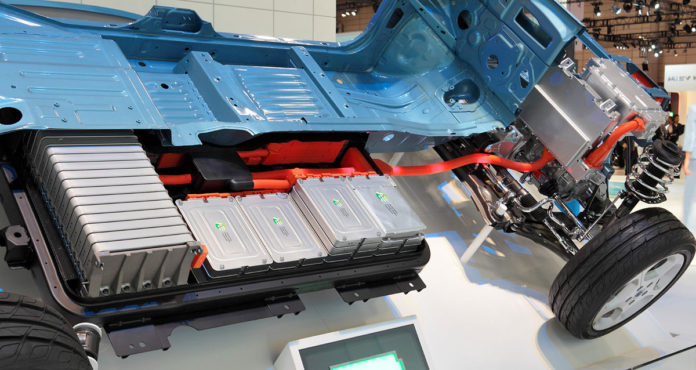
While the sales of electric vehicles have been patchy in the U.S., other nations have seen more success. In Norway, for example, plug-in electric vehicles (PEVs) now account for nearly half of new vehicle sales. California has seen far more modest growth, but it still has the briskest EV sales in the U.S.: in 2018, 7.8 percent of new vehicles sold in California were plug-in electric vehicles. Analyst group Wood Mackenzie has predicted that global plug-in electric vehicle sales will account for seven percent of all passenger car sales by 2025, 14 percent by 2030 and 38 percent by 2040.
Eventually, it might seem like the sky’s the limit for EVs…that is, until the question of raw materials supply is brought up. EV batteries use considerable amounts of cobalt, lithium and nickel, and problems with supplies of all three may hinder the growth of plug-in electric vehicles.
In the case of nickel, current low prices are hindering investment, but mines can take up to a decade to bring to full functionality. Cobalt prices have dropped precipitously since last year – from highs of $43 per pound to lows of $13 per pound. At the same time, China now controls about 90 percent of the EV industry’s cobalt supply chain, which could leave non-Chinese manufacturers scrambling for crumbs, according to John Petersen writing for Seeking Alpha, who predicts a coming “cobalt cliff.” Lithium, too, has seen softening prices, which makes investors hesitant at a time when investment is precisely what’s needed.
“Forecasting future demand and rapidly scaling production to meet such [raw materials] expectations inherently carries risks,” according to Seeking Alpha. “On one end of the spectrum, competition among miners to grow market share or to take advantage of higher prices can result in large amounts of supply coming online too quickly, putting downward pressure on lithium prices until demand catches up. On the other end, supply shortages can also arise because bringing new lithium online can face unexpected challenges related to weather, local regulations, labor conditions, financing, and geology.”
Investment may lag while demand remains uncertain, building a sort of perfect Catch-22. Without development and investment, demand can’t become certain.












